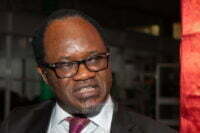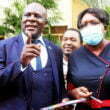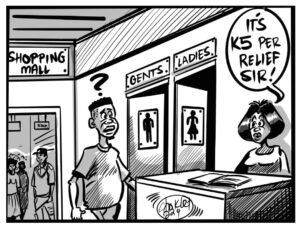The Secretary General of the PF Davies Mwila recently asked the media to “help to demystify nuclear science because “there is a wrong, yet deeply entrenched perception, that all things nuclear are bad and dangerous.” This is a challenge to all of us Zambians to get informed about nuclear energy.
The International Atomic Energy Agency (IAEA) – an organisation that promotes the peaceful use of nuclear technology – in a publication “Is Africa Ready for Nuclear Energy?” notes a third of almost 30 countries currently considering nuclear power are in Africa. Egypt, Ghana, Kenya, Morocco, Niger, Nigeria and Sudan have engaged with IAEA to assess their readiness to embark on a nuclear programme. South Africa is currently the only country in Africa with an operational nuclear power plant.
According to the Zambia Development Agency Energy profile (2013), Zambia has about 6000 MW unutilised hydropower potential. While gas and renewable energy is getting cheaper, the price of nuclear power only rises. The decision to move to nuclear power at a time when most nations are moving away from it needs to be seriously questioned.
Zambia last year signed a memorandum of understanding with Russia’s nuclear agency ROSATOM that includes building a nuclear plant. At what cost?
University of Johannesburg Professor of Chemist Hartmut Winkler in an article ‘Why nuclear power for African countries does not make sense’ warned the country receiving the nuclear plant “initially pays very little”, but when the repayments kick in “consumers are suddenly faced with a massive burden that most African economies will never be able to meet.” Figures on cost are not readily available, but he points out that “Zambia is eyeing a nuclear plant on the scale of Bangladesh’s Rooppur 2.4GW. The plant is expected to cost US$ 30 billion. Given Zambia’s total annual budget is US$ 7.2 billion this is clearly unaffordable.”
Furthermore, nuclear energy creates radioactive waste which can remain radioactive and a danger to human health and the environment for many years.
Look at what is happening in South Africa where proposals to boost supply from nuclear plants have been dropped. According to a Business Tech article, Energy Minister Jeff Radebe last year announced there would be a study to determine if more nuclear is needed after 2030. “But until then, there is no increase in nuclear generation envisaged.” The plant produces 1,860MW of power – 4 % of South Africa’s power capacity – but is being challenged on its implications for national debt.
According to the head of the IAEA Nuclear Infrastructure Development Section, Miko Kovachev, a successful nuclear power programme requires political and popular support and national commitment of at least 100 years. This includes committing to the entire life cycle of a power plant, from construction through electricity generation and finally decommissioning. On financing nuclear energy Kovachev noted few countries in Africa have sufficient installed grid capacity to accommodate the recommended capacity for planned conventional, large nuclear power plant. “For example, a country should have a capacity of 10,000 megawatts already in place to generate 1,000 megawatts from nuclear power.” The Energy Regulation Board Energy Sector Report 2017 puts Zambia’s installed electricity generation at 2897 MW showing that Zambia’s power capacity falls short of the recommended level.
Three companies which account for more than half of all nuclear power generation worldwide are facing financial challenges. In 2017 Pittsburgh based Westinghouse – for many decades the world’s largest provider of nuclear technology- filed for bankruptcy. The Japanese nuclear engineering giant, Toshiba, is also in financial problems and there are doubts about it continuing as a going concern. Europe’s biggest builder and operator of nuclear power plants, France’s state-owned Electricité de France (EDF) is deep in debt.
The increasing costs in part are due to addressing safety concerns linked to past reactor disasters like Chernobyl in Ukraine and Fukushima in Japan; and to companies factoring in the costs of decommissioning their aging reactors. Here are some examples of nuclear power plant accidents and their impact.
1. In the 1979 Three Mile Island accident, in Pennsylvania U.S.A., there was a partial meltdown of the nuclear reactor due to a series of mechanical and human errors at the site of the nuclear power plant causing the worst commercial nuclear accident in US history. Nobody died or was injured in the initial incident, but the meltdown released dangerous gases into the atmosphere which scientific studies have linked to an increase in cancer cases.
2. The 1986 Chernobyl disaster in Ukraine happened after an experiment was being conducted causing one of four reactors to explode and catch fire. Approximately 116,000 people had to be evacuated, and a large area surrounding the plant received fallout so great that it could not be farmed or pastured as a result of this accident. Significant levels of radiation were detected as far north as Scandinavia and as far west as Switzerland. In September 2005 the Chernobyl Forum, comprising seven United Nations organizations and programs, the World Bank, and the governments of Belarus, Russia, and Ukraine, published a three-volume, 600-page report assessing the impact of the accident on public health. Approximately 50 emergency workers had died of acute radiation sickness shortly after the accident, and 9 children had died from thyroid cancer because of radiation exposure. From among the 200,000 emergency workers who were present at the site in the first year following the accident, the people who were evacuated, and the 270,000 residents of the most heavily contaminated areas, an additional 3,940 people were likely to die from cancer during a prolonged period after the accident.
3. In the 2011 Fukushima Daiichi accident in Japan the plant was not designed to handle the tsunami that struck the area after an earthquake. The large-scale release of radioactivity resulted in people being evacuated from a 20 km exclusion zone set up around the power plant, similar to the 30 km radius Chernobyl Exclusion Zone which is still in effect more than 30 years after the accident. The plant’s operator had no way of paying the cleanup bill, estimated at $180 million and is being propped up by the Japanese government. After the accident, Japan, which relied on nuclear power for 30% of its electricity, shut all its 48 operational reactors for safety checks and seven years later only five are back online.
After Fukushima, the previously pro-nuclear Chancellor Angela Merkel of Germany set a deadline of 2022 for shutting down the country’s reactors which at the time generated 22% of German electricity. The French president committed to cutting nuclear’s share of energy generation from 75% to 50% by 2025 with the gap to be filled by renewables.
In conclusion, we should not rush into nuclear power without a full public discussion. Developed countries are getting out of it or scaling down. Decommissioning a nuclear plant is very expensive, and how to dispose of radioactive material is a nightmare. This will leave a huge debt for future generations. Some say radioactive waste will be a problem for 30 years, others say a hundred, but the point is you have to factor this in before you do anything. Zambia should be looking at selling uranium and using the proceeds to invest in more environment friendly power plants like hydro, solar, wind technology. Listen to Louis Armstrong’s song about the “wonderful world” which we must not destroy, let alone Zambia!
(Ompie Nkumbula Liebenthal, Former Namwala Member of Parliament and the Pan African Parliament)
Sources
https://www.iaea.org/
https://www.world-nuclear.org/
https://www.un.org/africarenewal/ The United Nations quarterly magazine on Africa
https://theconversation.com/why-nuclear-power-for-African-countries-doesn’t-make-sense
https://businesstech.co.za/news/wp-content/uploads/2018/08/Energy.png












